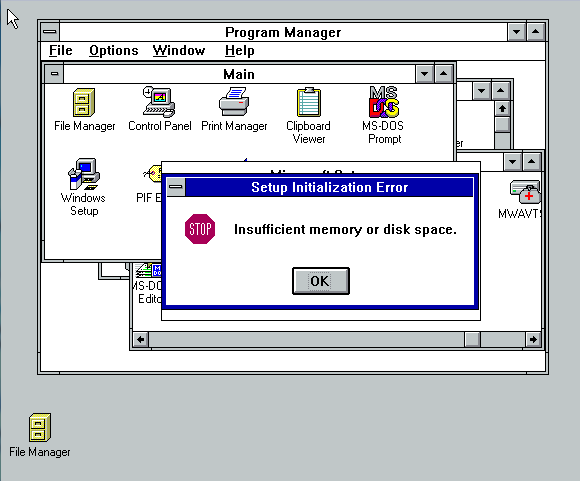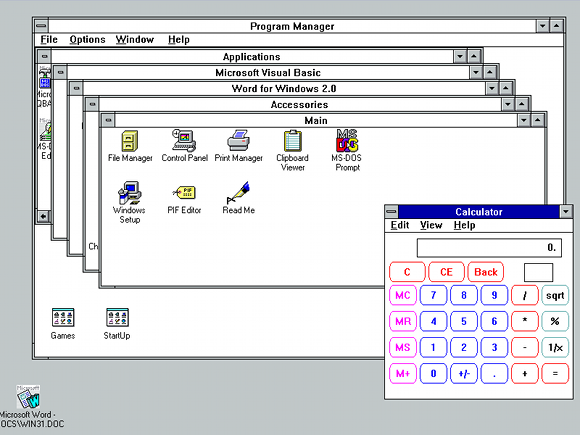This article is more than 1 year old
Windows 3.1 rebooted: Microsoft's DOS destroyer turns 20
Memory errors, files flung - how did Redmond win?
Misty water-coloured meeeemories...
Annoyances also abound. My first go at installing Word for Windows 2.0 failed on a clean install with an “Insufficient memory or disk space” error. A dusty memory floated up to the surface, prompting me to exit Windows and run Memmaker, following which it all started working.

A typical error message said you lacked memory when you had plenty installed
Hitting Save for the first time in Word is revealing. The location defaults to c:\winword, which is the application directory. There is no Program Files nor My Documents. Every user had to devise their own organisation schemes. At the time it did not seem to matter much, but the intermingling of user data and application binaries, and the way application installs can trample over operating system files, made Windows hard to secure and hard to keep stable. It was poor design, for which Microsoft and its users paid a heavy price in subsequent decades.
Program Manager is another irritation. Users rarely found it easy to navigate. Another common problem was that users would lose one application behind another, presume it had closed, and then launch a further instance. This might continue over the day until Windows ran out of memory.
Savvy users knew about alt-tab of course, and did not have this problem, but Microsoft did not come up with a satisfactory user interface for multiple overlapping windows until Windows 95. Win 95 had a taskbar, making it easy to see what was running as well as to switch between applications.
It is an interesting thought as the launch of Windows 8 approaches. Windows 8 in Metro mode has lost the taskbar, and once again alt-tab is the best way to switch between applications, which makes you wonder if a lesson has been forgotten.

The Windows 3.1 desktop showing Program Manager
Charles Petzold, in his 1992 book Programming Windows 3.1, remarks that:
Windows now forms the center of Microsoft’s strategy for operating systems. Microsoft has targeted Windows for everything from small, hand-held, stylus-based machines to powerful RISC workstations.
The benefit of 20 years of hindsight shows how right and how wrong Petzold was in his pronouncement. He was correct about the strategy, but he did not foresee how Microsoft would struggle to adapt the WIMP (Windows, Icons, Menus, Pointer) design of Windows to work well on a hand-held device.
in 1992, Microsoft had around 11,000 employees and executed its desktop Windows strategy to perfection. Today it has more than 90,000, but keeping Windows on top and application developers happy will be a harder task than it was 20 years ago. ®
